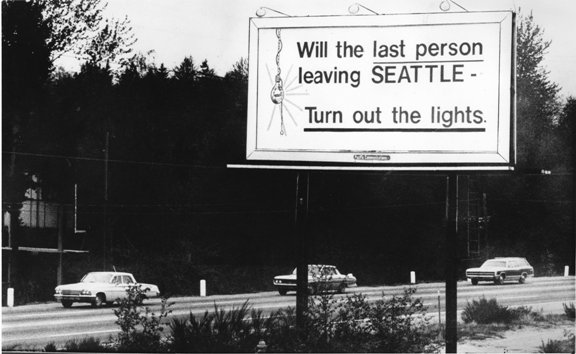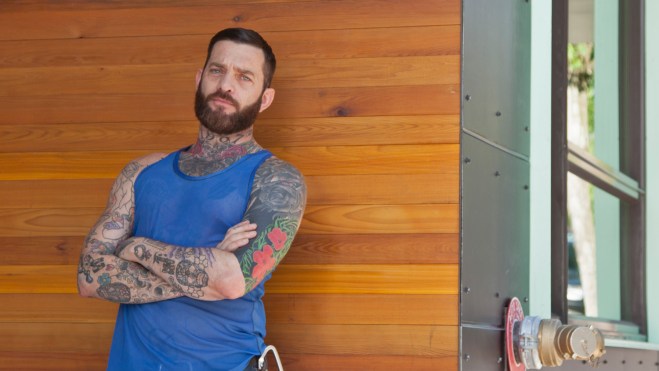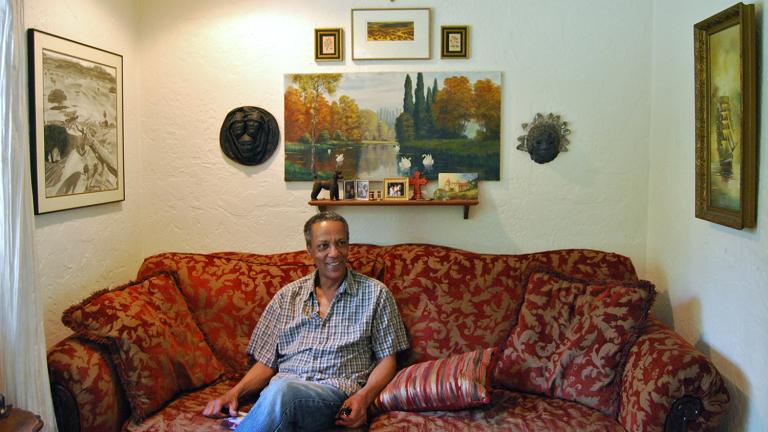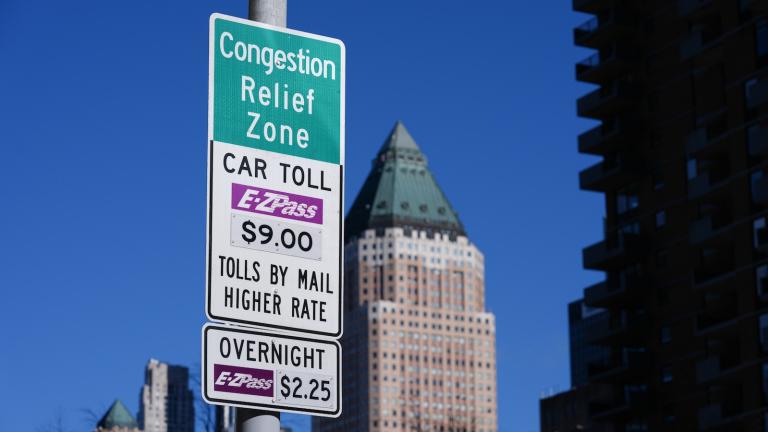Seattle is booming. The out-of-the-way Northwest city that used to be thought of — when it was thought of at all — primarily as the home of grunge music and drizzle is now among the fastest growing major cities in America. The population is skyrocketing, the unemployment rate is low, and gleaming, luxury apartments are going up seemingly overnight (a recent count showed 75 cranes rising over downtown). From the outside, life is good in this once-sleepy town, especially compared to cities still recovering from the Great Recession. But reality is more complicated, and nowhere is this more apparent than in Seattle’s housing market.
The median home price in Seattle is now $535,000, a 19 percent increase since March 2014, and the market is so competitive that bidding wars are common. “I would say about 50 percent of homes are going over the asking price in the first week, and 16 percent are cash offers,” says longtime Seattle real estate agent Penny Bolton. “I had a client who sold her house for a million-five. She paid $30,000 for it in the late ’70s, early ’80s.”
[grist-related-series]
With numbers like that, it’s a good time to be a seller in Seattle. A buyer? Not so much. When asked what the market is like for his clients, realtor Christian Nossum says, “Just today I had a buyer win a situation where there were 33 other offers. They were lucky No. 34 and they had to pay over $150,000 more than the asking price. If that doesn’t show how crazy the market is, I don’t know what does.”
The market is crazy, and it’s changing the character of the city. For generations, the primary means of growing wealth in Seattle — and in most of America — has been homeownership. You work hard, buy a house, raise a family, and, with a few decades and a little bit of luck, retire without worrying about how you’re going to pay rent. It’s the American dream. But in certain cities — places like New York and San Francisco — homeownership is only possible for those who either bought long ago or who have money. A lot of it.
Seattle has become one of those cities.

For much of its history, Seattle was a working-class town, first home to lumbermen and shipbuilders and then to Boeing machinists. The Boeing bust of the early 1970s cut the workforce in half, and the local economy took a nosedive. Homes that today cost millions of dollars sat empty as residents left for cities with better job prospects. A billboard near the airport read, Will the last person leaving Seattle — Turn out the lights.

“My husband’s first house was $4,000,” says realtor Penny Bolton. “That was during the Boeing bust. In this neighborhood, the houses were all empty. And I mean, empty. You could just push the front door in.”
But Seattle’s economy has rebounded since then, and it’s a different kind of factory town now: a new tech city.
A lot of big tech companies have offices in Seattle, including Google, Microsoft, and Facebook, with Alibaba expected to open here soon. But the largest tech player in Seattle is Amazon. And while Amazon isn’t the metro area’s biggest employer (that honor still goes to Boeing, which has 70,000 employees to Amazon’s 15,000 and counting), it is the most reviled, at least among those who don’t work there.
The massive online retailer is widely blamed for the skyrocketing cost of living in Seattle, and it’s easy to see why: Amazon’s Seattle employees are not those who pack books or shoes or knickknacks in giant distribution centers for minimum wage — they are highly paid developers and programmers who can afford $1,600-a-month studio apartments directly out of college.
For some Amazon employees, especially those who move from the prohibitively expensive Silicon Valley, Seattle seems downright affordable.
Realtor Christian Nossum explained the population shift this way: “All these tech companies that are in the heart of Seattle are hiring so many people, and a lot of time, they’re from out-of-state. I was showing a guy moving up from Mountain View because they can’t afford anything there. He told me they pay $3,600 a month in rent for a little 1980s manufactured home. The lowest priced homes in their neighborhood are $1.2 million. So they move up here.”
A recruiting video called “Life In Seattle” shows young Amazon employees discussing the virtues of the city. “Everyone runs, everyone does Crossfit,” says one transplant. “Housing is great,” says another. “It’s not very expensive. It’s very reasonable.”
That’s not a phrase you hear often outside the gates of Amazon. One comment on the video reads, “It’s really great to hear that you bought a house. Because no one else can now.” More typical is, “We hate you people. Go home.” (The Amazon video has inspired parodies; one by local record label Sub Pop shows employees gushing about all the “great places to live” over shots of homeless encampments.)

Local artist John Criscitello has become the face of the anti-Amazon ethos. His guerilla posters dot telephone poles and electrical boxes in Capitol Hill, the neighborhood that for 40 years was home to working-class gay folks and artists but is now a bedroom community for tech workers. “We came here to get away from you,” reads one Criscitello poster. Another says, “u r a dick,” with the Amazon logo turned into a cock and balls.
Criscitello mourns the change in Seattle’s gayborhood as the population of queer people has declined and small, independent businesses have been replaced by chain retailers and sports bars — and as the rate of hate crimes has increased. But it’s not just about losing his seat at the bar; it’s about his ability to stay in the city at all.
“What happens is, you get a bank, you get a chain yoga studio, you get a boutique gym, and you get a restaurant serving $16 bowls of ramen,” Criscitello says while showing me around Capitol Hill. “Eventually you walk around and you realize, I just passed a bunch of places where I can’t afford to shop, I can’t afford to eat, and I can’t afford to live.”

John Criscitello
But as much as Amazon is responsible for the changing culture of the city, it isn’t setting the price of housing; it’s landlords, developers, and the free market that set home prices. What Amazon is actually doing is paying its workers well enough to afford the market value of housing. The problem is that, in comparison to tech workers, everyone else is poor.
A recent report from the Brookings Institution named Seattle the city with the highest income growth among top earners: Between 2012 and 2013, the top 5 percent of households saw a pay raise of 15 percent, or $36,000 on average. But while the rich have gotten richer, wages for the bottom half have stagnated, and jobs that have historically been considered middle class — teachers, nurses, civil servants — no longer pay the bills.
The average rent in Seattle was $1,615 a month as of March 2015; according to Federal Housing and Urban Development standards, you would need to make a minimum of $64,600 annually to afford this without undergoing financial distress. That may be possible for the upper tier of incomes, but it’s different for a teacher making $60,000 a year or a cop making $55,000. It’s even harder for bus drivers, baristas, and those who clean up the Seahawks stadium after football games. Even though the city is phasing in a $15-an-hour minimum wage, the highest in the country, it isn’t enough to live on. “Fifteen dollars might sound like a lot to people — unless you’re the one making it, in which case you know that’s about $32,000 a year, working full-time,” says Alon Bassok, city council candidate and professor in the University of Washington’s Department of Urban Design and Planning.
“On $32,000 a year, what you can afford is a payment of $866 a month,” Bassok says. “The simple reality is, in Seattle right now, there is no place you can rent for $866 a month.”
It wasn’t that long ago when you could find housing for $866 a month. Nancy (not her real name), a 60-year-old with a restricted income, has lived in the city for 40 years. She says rent for her first apartment was only $75 a month. Even just a few years ago, she paid just $825 for her one-bedroom apartment in Capitol Hill.
But in 2012, a company called Hamilton Urban Partners bought Nancy’s building. “The owners were all in the same fraternity,” Nancy told me. “We all knew the rents would go up.” And go up, they did. In the two years that Hamilton has owned Nancy’s building, her rent has doubled to $1,650 a month. “And I have every reason to believe it will go up more,” she says.
Hamilton has been remodeling apartments as old tenants have moved out — they put in granite countertops and stainless steel appliances — but there have been no improvements to Nancy’s unit since they bought the building, despite the rent increase. Nancy says she is one of three original tenants left, and with her only income coming from disability checks, she can’t afford to stay much longer. She has no friends or family to move in with.
“I know someone who found Section 8 housing in Georgetown for $200 a month,” Nancy says, “but she was on the waiting list for 10 years. I looked into it, thinking this would be great, but there are 9,000 people ahead of me. And the way they do it is, they hold a lottery. There’s a lottery to get on the waiting list. I’m frozen with fear.”

Seattle city council member Kshama Sawant, who campaigned on a platform of rent control and raising the minimum wage, and fellow council member Nick Licata held a town hall meeting in late April to address Seattle’s rent hikes. The room was packed — every seat was filled and people leaned against walls and crouched in the aisles — and the audience was angry. Sawant told the story of Andrew, a constituent who called her office after his rent went up 85 percent.
Did Andrew’s wages go up 85 percent, she asked? Everyone knew the answer. And an 85 percent rent hike is perfectly legal, the councilwoman said, because rent control is not. (Rent control was outlawed by the Washington state legislature in 1981, when it passed a bill drafted by the Washington Coalition of Affordable Housing, an ironically named pro-developer lobby. Because of this, the cost of housing is basically unregulated.)

Kshama SawantSeattle City Council
After Sawant spoke, Seattle residents came up to the microphone to tell their stories, and most of them were just like Andrew’s. These were not people who looked like they soon could be homeless — there were a lot of NPR tote bags in the room — but for many, it had started to seem like a real possibility. One woman, a 67-year-old social worker, said she couldn’t retire because of rent increases.
In an interview later, I asked Sawant to explain what exactly she means when she talks about rent control. “What we mean by rent control,” she said, “is a city-wide measure to stem skyrocketing rent increases. Contrary to what a lot of the scaremongers will say, it doesn’t mean freezing rent at a particular dollar value, but ensuring rents would increase by a multiple of the consumer price index.” That, she said, would give landlords the income for operations and maintenance, while assuring that tenants aren’t evicted en masse.
But not everyone agrees that rent control will solve the city’s housing crisis. In fact, two of the major American cities that have rent control — New York and San Francisco — are the two most unaffordable cities in the nation. “Rent control is a terrible idea,” says Alan Durning, the founder of the Sightline Institute, a progressive think tank. “It limits the long-term supply of housing because people stop building housing.”
Instead, Durning wants to see re-zoning and fewer restrictions on development, so you can fit more bodies onto each lot. “Currently,” Durning says, “we’ve zoned two-thirds of buildable land in the city for single-family homes. In those zones we allow only one household per lot, but we need to increase density. I’m not saying that Seattle needs to become Hong Kong, but we could become a little more like Amsterdam.”
Durning is an advocate for micro-housing — dorm-like apartments as small as 100 square feet that typically have shared kitchens. Last fall, the city council voted to put new restrictions on these developments after citizen complaints about their impact on neighborhoods, but they continue to go up, and Seattle is now building more micro-housing than any other U.S. city.
“The range of debate about zoning is crimped and constrained by the idea that everyone should be able to afford a two-bedroom, 1925 bungalow on a teacher’s wage,” Durning says. “In order for us to hold onto our values as a city — as a progressive, tolerant, affordable place of opportunity and justice — we need to let go of the physical structure that we’re attached to and accept that the city is going to look different.”
But micro-housing — also known under the brand name “aPodments” — has many critics as well. Jon Grant, city council candidate and former executive director of the Tenants Union of Washington, says, “aPodments are actually a land grab by developers who are trying to encroach into the single-family-home zoned areas. What I chafe against are the ideas that these aPodments are actually affordable. If it’s $1,000 a month, it’s not affordable.”
Grant says he wants to see more regulation of developers, not less. “The free market has a great record providing for consumer goods,” he says, “but it has a terrible track record when it comes to providing basic needs. Whether it’s health care or housing or living wages, the market doesn’t do that.”

Seattle Mayor Ed Murray has made affordable housing a priority of his administration. In response to the crisis, he created the Housing Affordability and Livability Advisory Committee (HALA), a 28-person task force charged with devising policy solutions to address the affordability problem. (Both Durning and Grant sit on this committee.) The mayor has set a mandate to build 50,000 new units of housing in the next 10 years, 40 percent of which must be affordable for low-income residents.
The mayor’s office is also addressing affordability through re-zoning, tax incentives for developers, and a local property tax called the Seattle Housing Levy. “The Seattle Housing Levy is the cornerstone of Seattle’s long history of funding affordable housing,” says Steve Walker, director of the Office of Housing. “What we do with that money is lend it out to housing developers — primarily nonprofit but not solely nonprofit — to build affordable housing that’s rent- and income-restricted for 50 years.”
Despite the $145 million levy that passed in 2009, however, the Office of Housing is struggling to provide for everyone. “It’s a crisis,” says Walker. “We’ve gotten comfortable saying those words.”
Unfortunately for Seattle, the solutions to the crisis may lie in the hands of the state, not the city. Besides the state’s prohibition on rent control, there are also limits on taxes that could be used to build more affordable housing. State law, for example, restricts property tax increases so that even though real estate values are booming — and making big winners of landowners — Seattle can’t increase property taxes to pay for housing.
In addition to these restrictions, Washington state has the least progressive tax policy in the nation, with no income tax and a high sales tax that disproportionately impacts the poor. State Democrats have proposed a capital gains tax on the wealthy that could be used to subsidize housing, but with Republicans in control of the state Senate, it is unlikely to pass.
There are, however, measures the city could take to stem the crisis right now. One solution is linkage fees, which are essentially a tax on re-development and new construction paid by developers themselves. These fees could be used to provide affordable and low-income housing. “Linkage fees are a sort of compromise,” says Liz Etta, interim executive director of the Tenants Union of Washington, “a way of saying, ‘If you want to develop property, you need to provide for people as well.’”
In addition to linkage fees, Etta says the Tenants Union is also advocating for a right of first notice — which would give tenants the first opportunity to purchase a property when their landlord decides to sell — and a right of first refusal, which would allow tenants to block the sale of a property to parties they suspect will jack up the rent and kick them out.
But mostly, Etta sees the need for tenants to organize. This has worked in the past, she says, at least on a small scale. In 2002, with the help of the Tenants Union, residents of the Benson East in nearby Kent organized, formed a nonprofit, and partnered with a donor to purchase their complex, saving 32 families from eviction. The Benson East became the first tenant-owned complex in Northwest.
Etta thinks this is replicable. “We’re helping tenants come together and build associations within their own buildings,” she says, “so tenants feel empowered enough to go to their landlords and say, ‘We will not accept these high rent increases.’”

Whatever the causes or solutions to Seattle’s housing crisis, the implications are vast. “If we don’t do something about this spiraling crisis in affordable housing,” says Kshama Sawant, “what Seattle is going to become is a city where only the wealthy can live. It will be a playground for the rich, while the rest of us who make the city run, who work in the city, will be pushed out.”
This isn’t a theoretical future: It’s happening now.
While reporting this piece, I ran into an old friend from college in North Carolina. He’s been in Seattle for the past seven years, and he’s got a good job as a woodworker. His wife is finishing her graduate degree in social work, and they have a beautiful little 1-year-old boy.
Their lives are here. But their house is tiny — just 500 square feet including a storage loft — and it can’t hold their family much longer.
I asked my friend if they are going to buy a place, and he said buying in Seattle would mean buying in Renton, a suburb 15 miles out of town. They don’t want to live in Renton. Instead, they’ll leave the area entirely. They’ll find a place where you can still be a woodworker or a social worker and buy a house; where you can still work hard, raise a family, and, with a few decades and a little bit of luck, retire without worrying about how you’re going to pay rent.
It’s the American dream. But not here.



